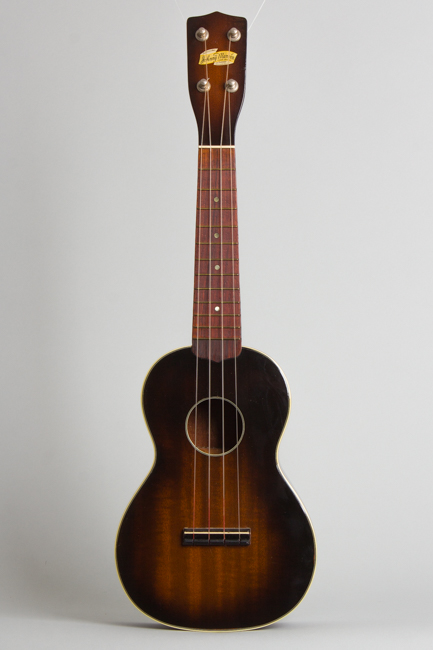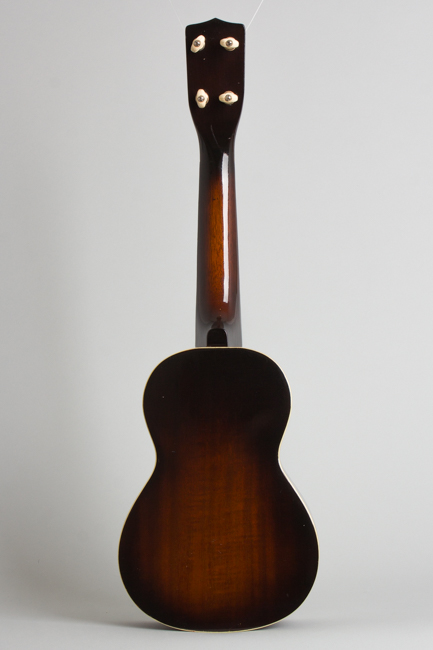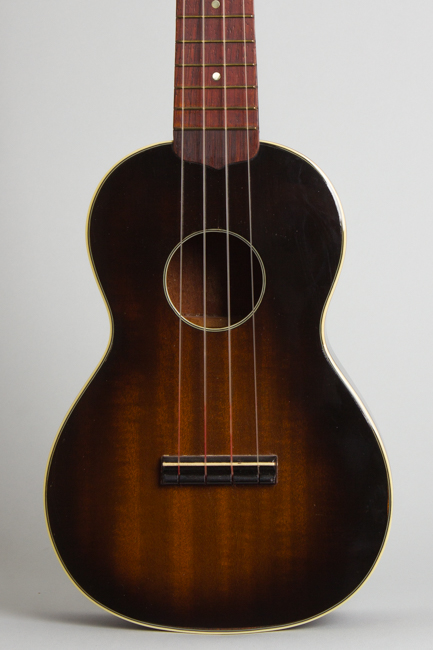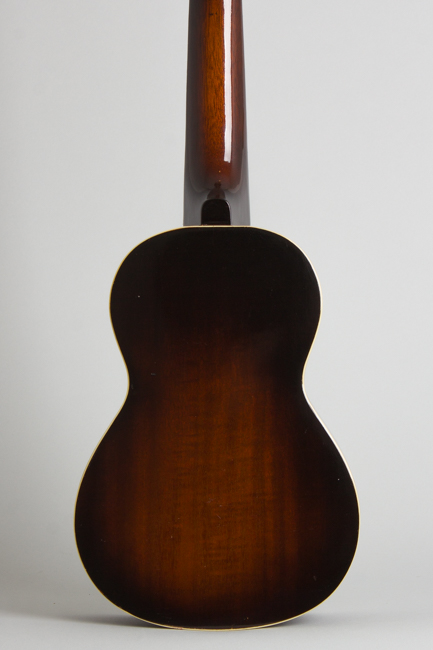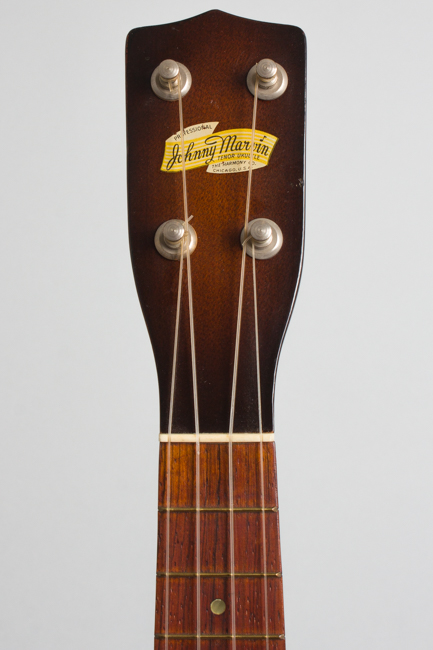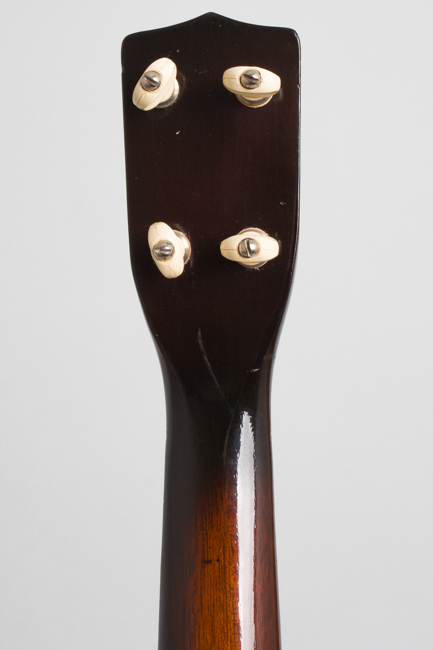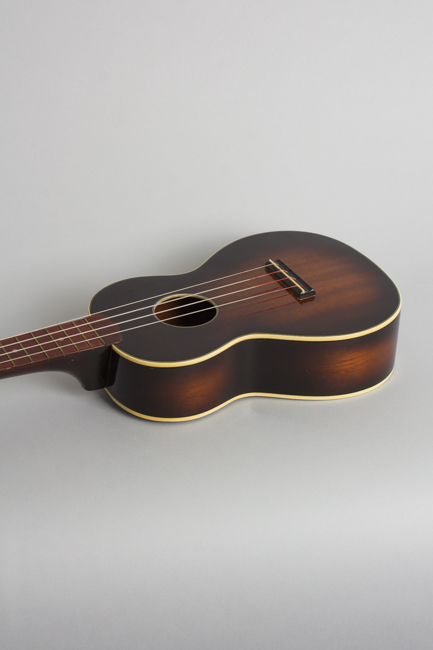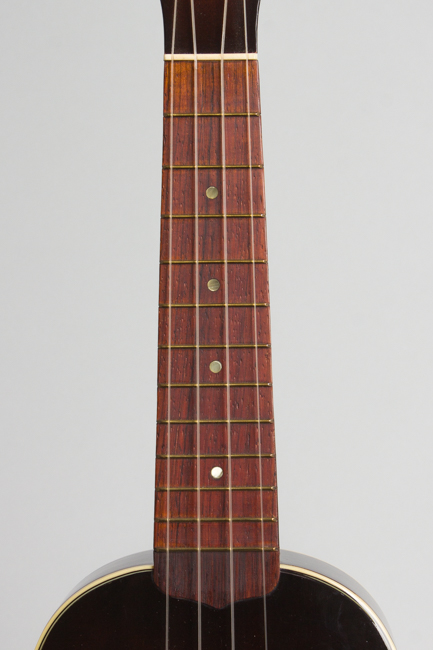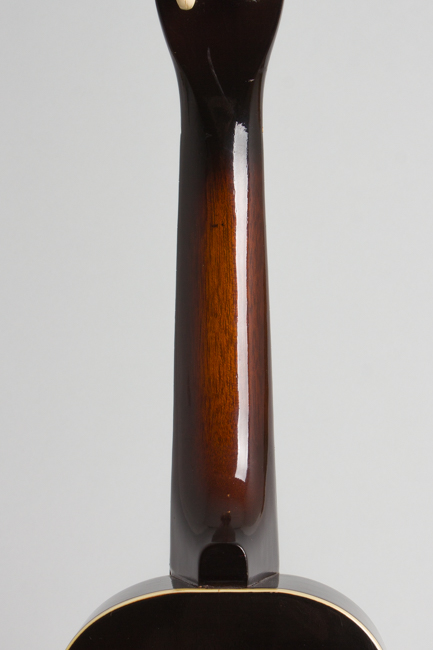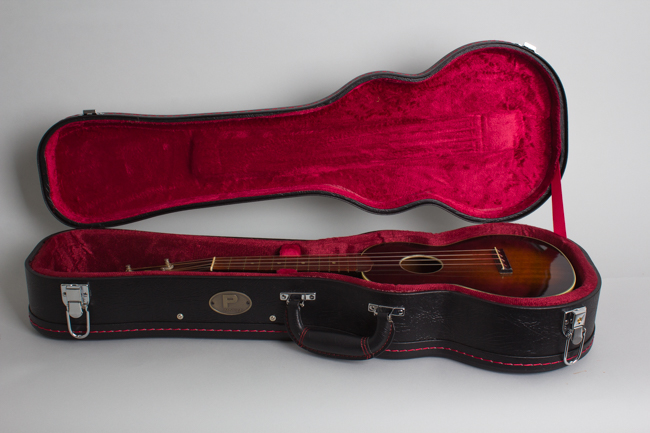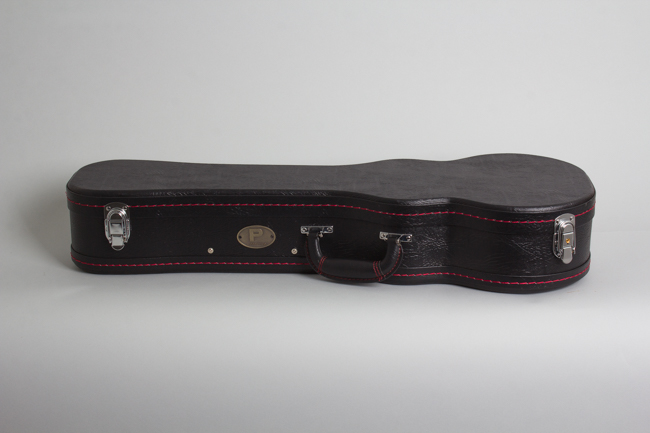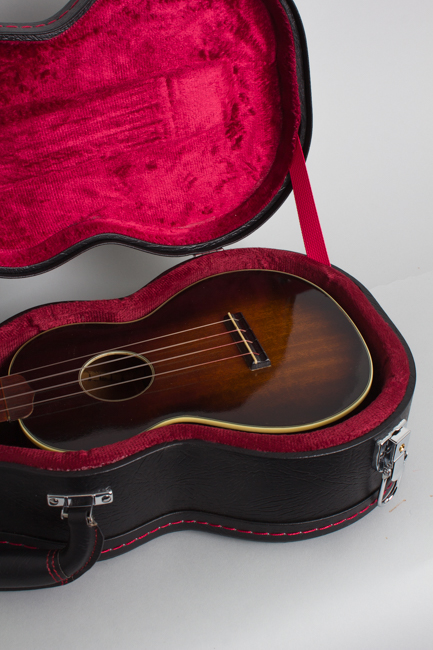Harmony Johnny Marvin Professional Tenor Ukulele (1940s)
Harmony Johnny Marvin Professional Model Tenor Ukulele (1940s), made in Chicago, sunburst lacquer finish, mahogany top, back and sides, rosewood fretboard, black tolex hard shell case.
While Harmony is most remembered in the ukulele realm for the thousands of beginner-grade instruments they built from the 1920s through the 1960s, the company also produced some higher quality ukes. The Johnny Marvin Professional Uke was originally one of the finest, and a nicely made instrument compared to much of the company's output. This example dates to the 1940s when the model (and Johnny's career) were on their last legs but is still about the best ukulele harmony offered.
The size of this instrument is closer to what is now considered a "concert" uke than a full tenor. The mahogany body has a triple-bound top and single bound back continued on from the 1920s but the airplane-shaped pin bridge the original model sported is ling gone. The mahogany neck has a rosewood fingerboard with 4 pearl dots and the headstock is marked with a banner decal reading "Johnny Marvin Professional Tenor Uke". The tuners are the same Champion pegs used by Martin in the 1940s.
Johnny Marvin was a popular singer in the 1920s who started his recording career imitating Ukulele Ike (Cliff Edwards), recording frantically paced vocal/uke records under the name "Honey Duke and his Uke." He later had a very successful run of pop discs on Victor, many of which featured his ukulele playing. His ukulele solo rendition of "Twelfth Street Rag" is still copied by ukeists today. Marvin actively used and endorsed Harmony ukuleles from the 1920s on but this namesake instrument disappeared in the early 1950s, although his fellow Vaudeville star Roy Smeck's Harmony endorsements continued into the 1960s.
Overall length is 24 1/16 in. (61.1 cm.), 7 3/4 in. (19.7 cm.) wide at lower bout, and 2 3/4 in. (7 cm.) in depth at side, taken at the end block. Scale length is 14 5/8 in. (371 mm.). Width of nut is 1 13/32 in. (36 mm.).
This is a superbly clean instrument showing only light wear and handling marks for something like 70-80 years on earth. Not only does it appear hardly played but there are no apparent repairs or alterations either. This is easily the nicest of these we have ever seen, a perfect collector's example; even the Nylon strings appear decades old. As a player it is OK; the action is fine in the first position but does creep up as it ascends the fingerboard. The sound is quite good for a Harmony, if not rivaling Martin standards. If you have been looking for one of these for the collection, this is about as clean as instruments this old generally come. It resides in a modern HSC. Excellent Condition.
While Harmony is most remembered in the ukulele realm for the thousands of beginner-grade instruments they built from the 1920s through the 1960s, the company also produced some higher quality ukes. The Johnny Marvin Professional Uke was originally one of the finest, and a nicely made instrument compared to much of the company's output. This example dates to the 1940s when the model (and Johnny's career) were on their last legs but is still about the best ukulele harmony offered.
The size of this instrument is closer to what is now considered a "concert" uke than a full tenor. The mahogany body has a triple-bound top and single bound back continued on from the 1920s but the airplane-shaped pin bridge the original model sported is ling gone. The mahogany neck has a rosewood fingerboard with 4 pearl dots and the headstock is marked with a banner decal reading "Johnny Marvin Professional Tenor Uke". The tuners are the same Champion pegs used by Martin in the 1940s.
Johnny Marvin was a popular singer in the 1920s who started his recording career imitating Ukulele Ike (Cliff Edwards), recording frantically paced vocal/uke records under the name "Honey Duke and his Uke." He later had a very successful run of pop discs on Victor, many of which featured his ukulele playing. His ukulele solo rendition of "Twelfth Street Rag" is still copied by ukeists today. Marvin actively used and endorsed Harmony ukuleles from the 1920s on but this namesake instrument disappeared in the early 1950s, although his fellow Vaudeville star Roy Smeck's Harmony endorsements continued into the 1960s.
Overall length is 24 1/16 in. (61.1 cm.), 7 3/4 in. (19.7 cm.) wide at lower bout, and 2 3/4 in. (7 cm.) in depth at side, taken at the end block. Scale length is 14 5/8 in. (371 mm.). Width of nut is 1 13/32 in. (36 mm.).
This is a superbly clean instrument showing only light wear and handling marks for something like 70-80 years on earth. Not only does it appear hardly played but there are no apparent repairs or alterations either. This is easily the nicest of these we have ever seen, a perfect collector's example; even the Nylon strings appear decades old. As a player it is OK; the action is fine in the first position but does creep up as it ascends the fingerboard. The sound is quite good for a Harmony, if not rivaling Martin standards. If you have been looking for one of these for the collection, this is about as clean as instruments this old generally come. It resides in a modern HSC. Excellent Condition.
